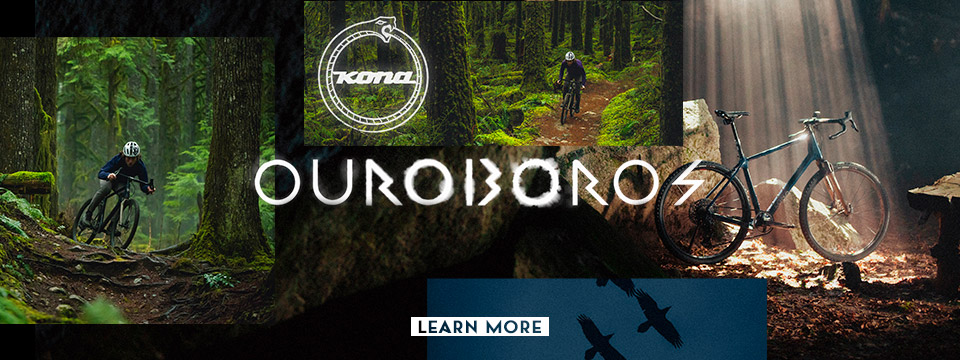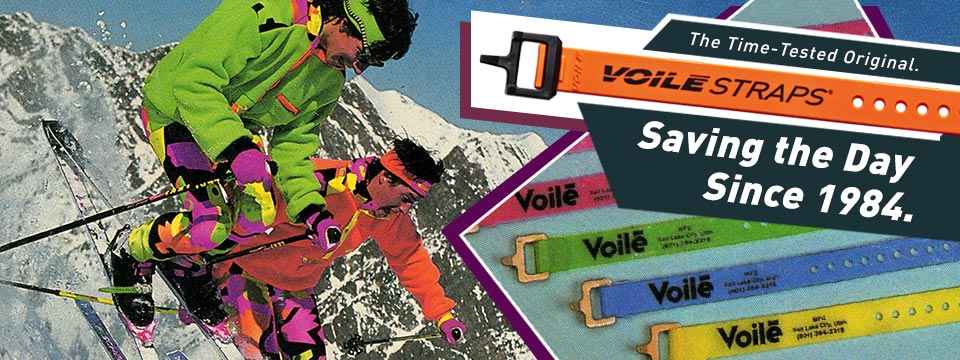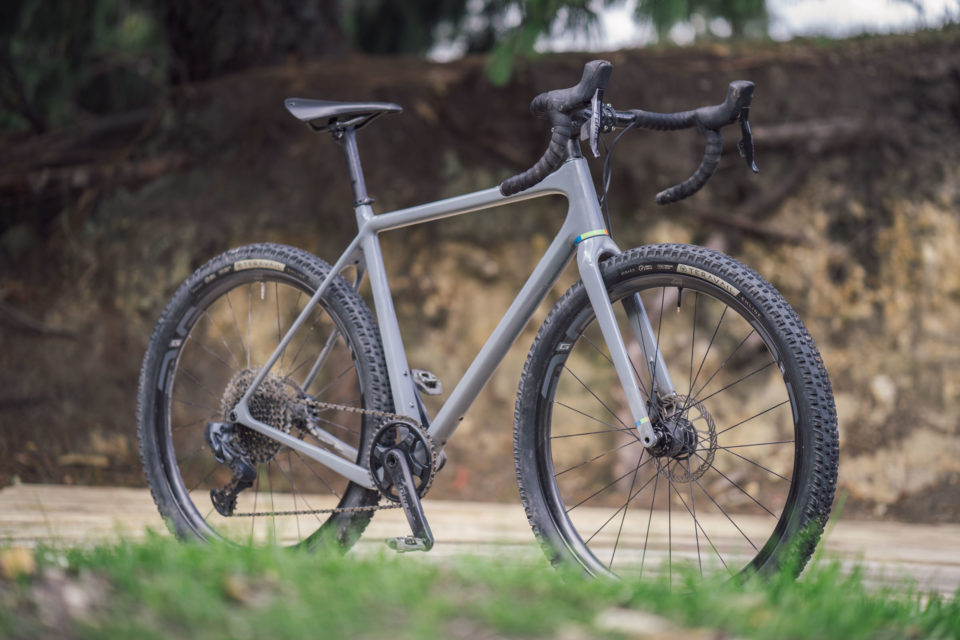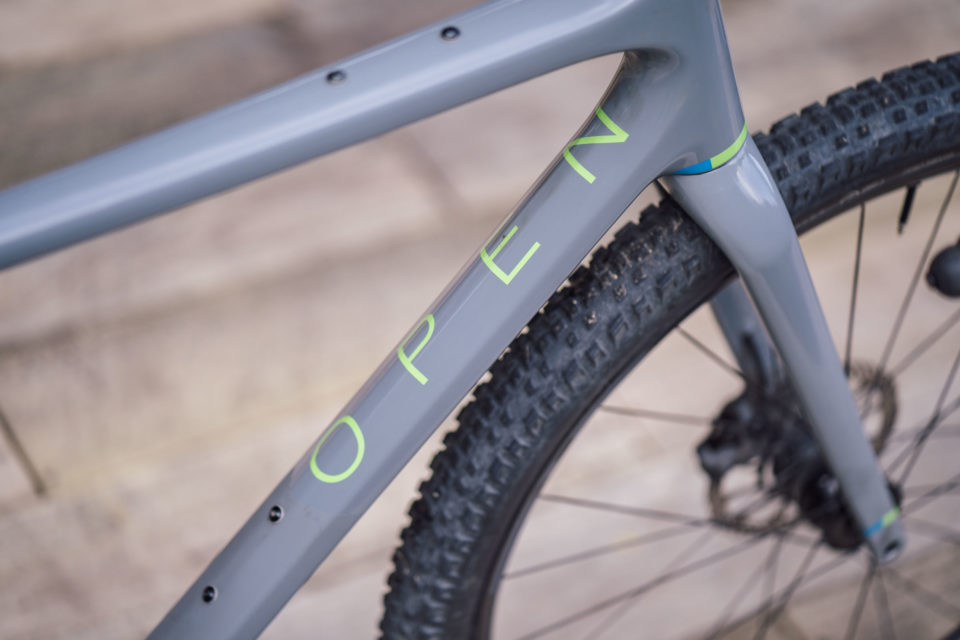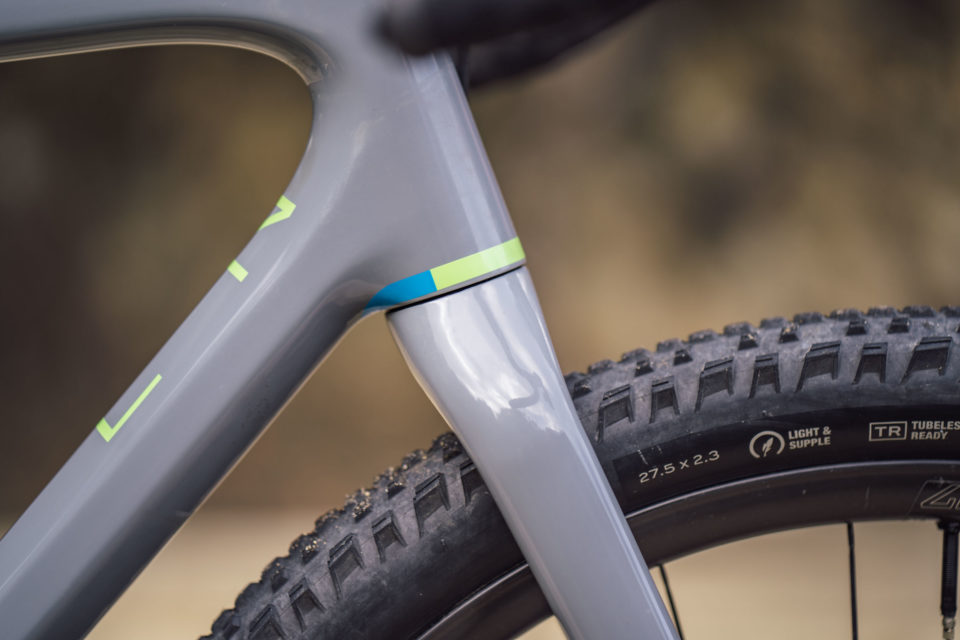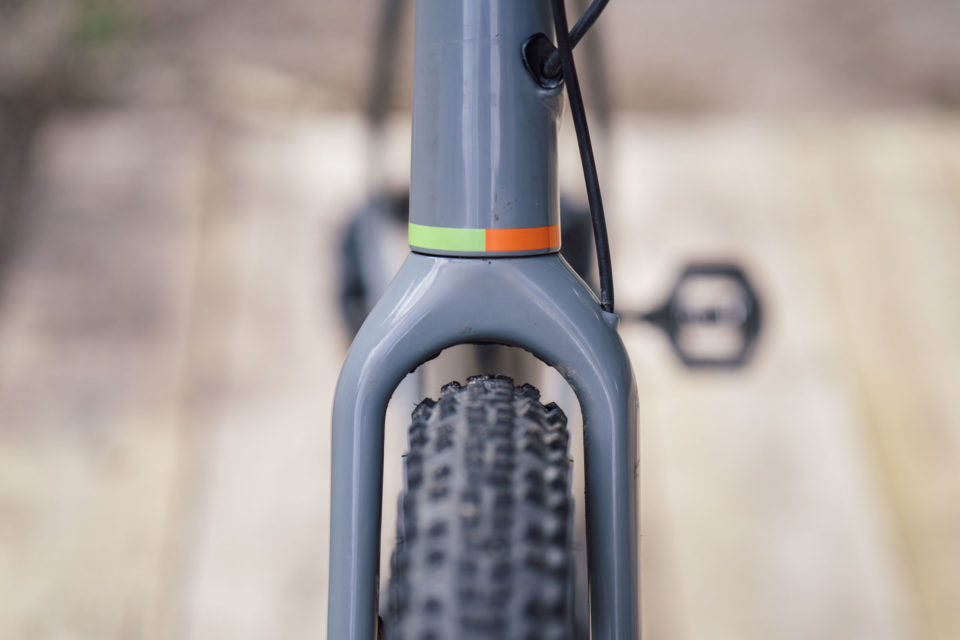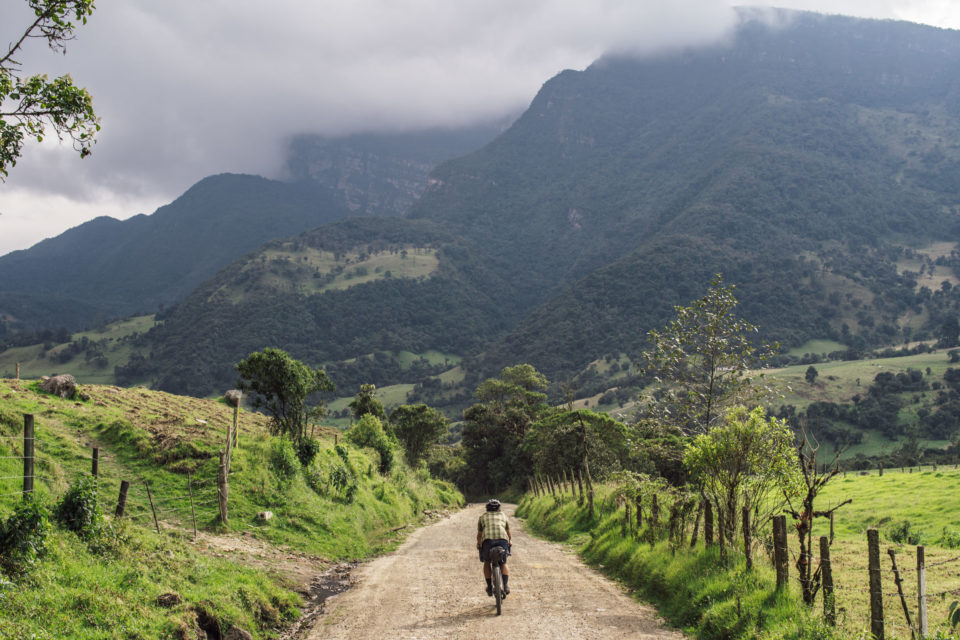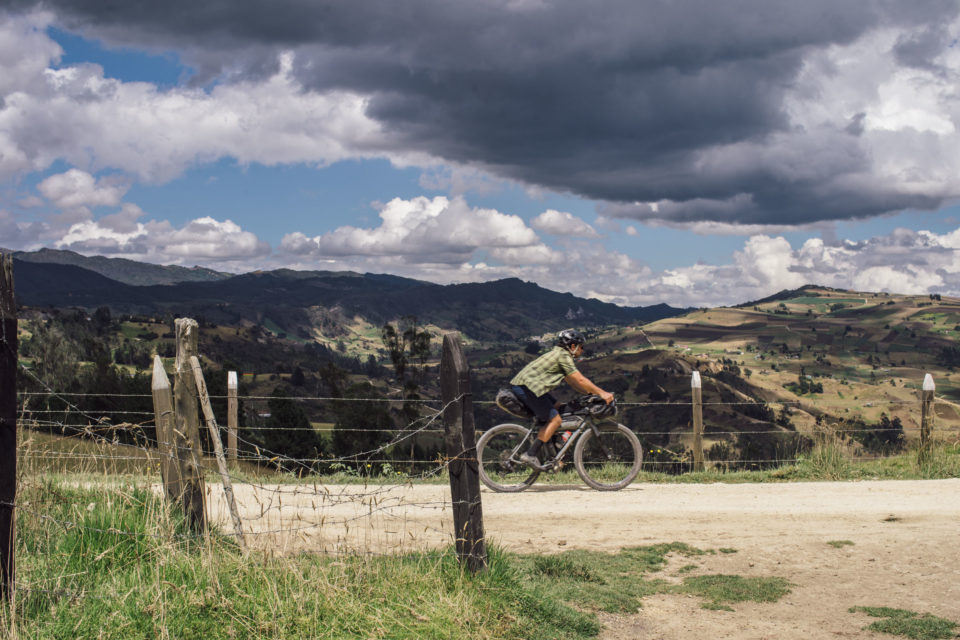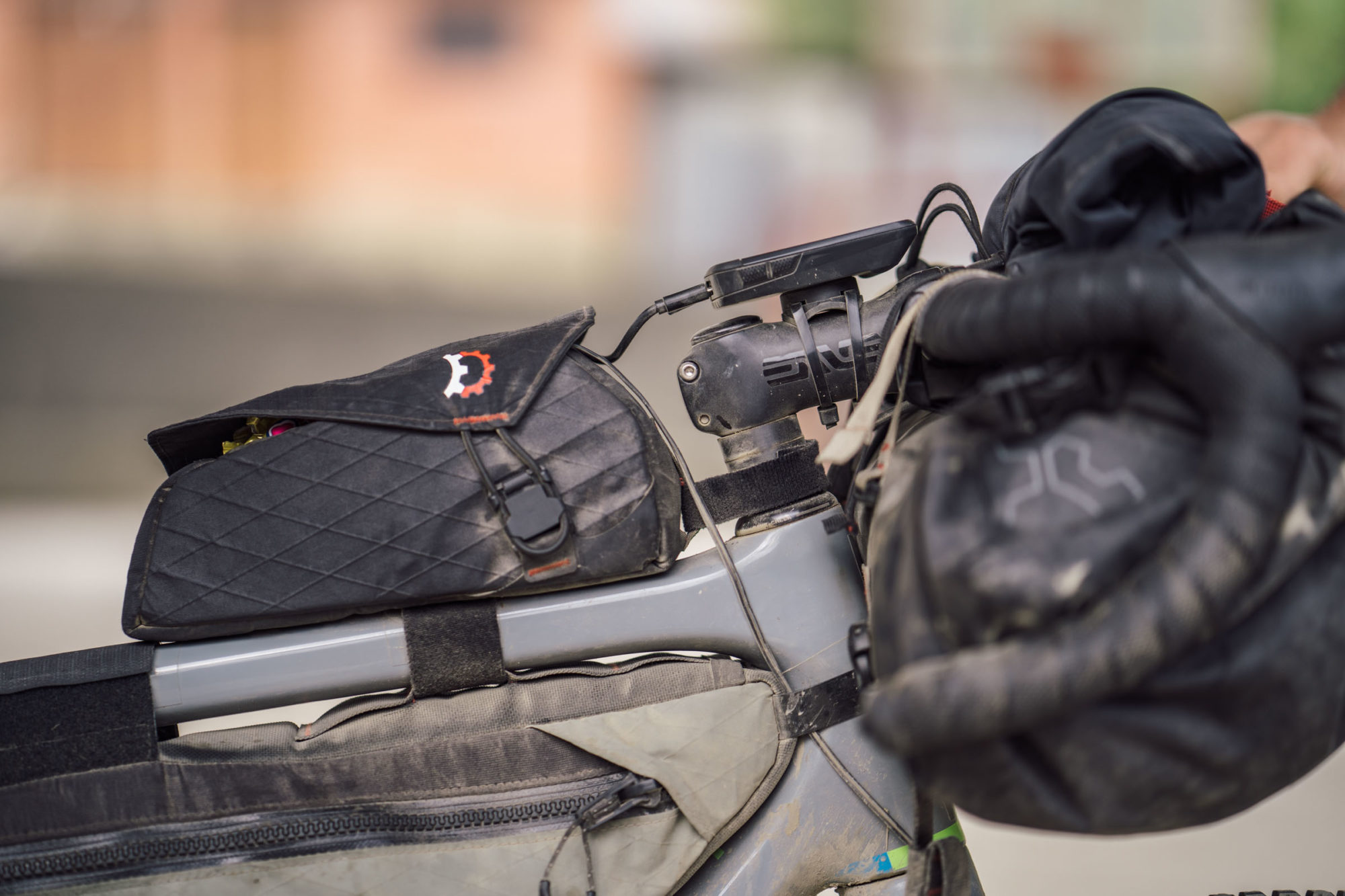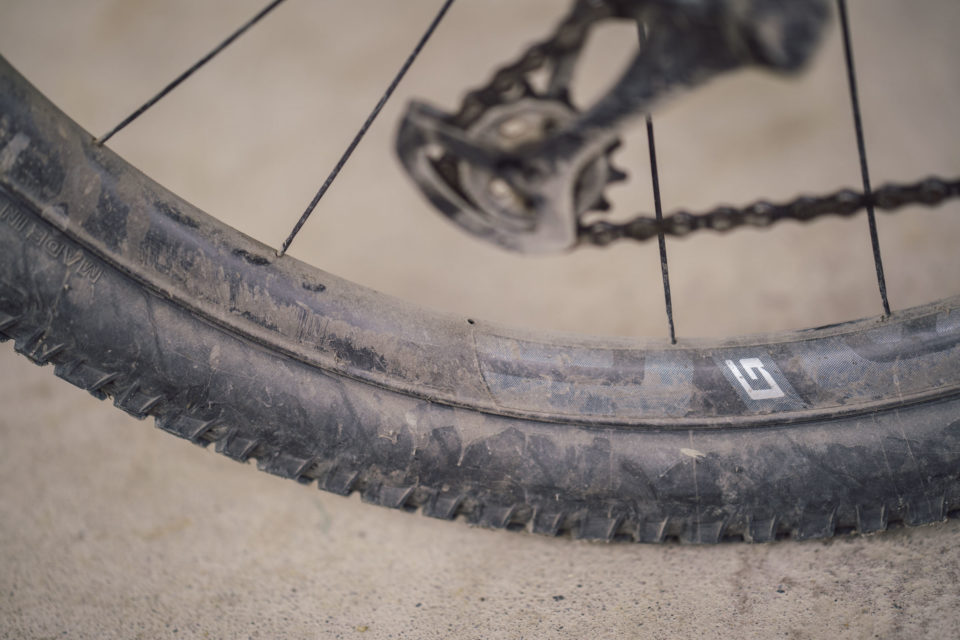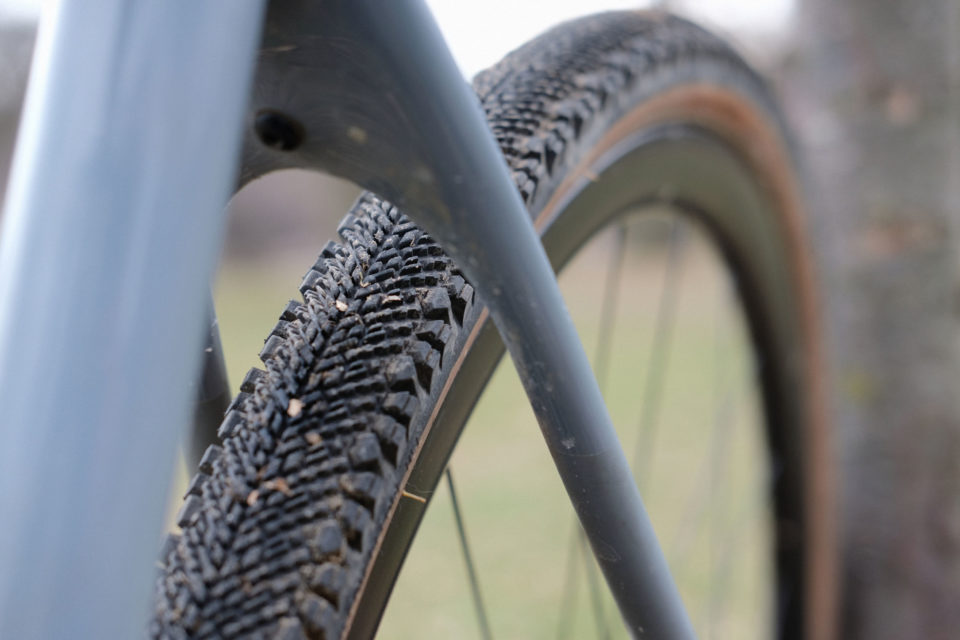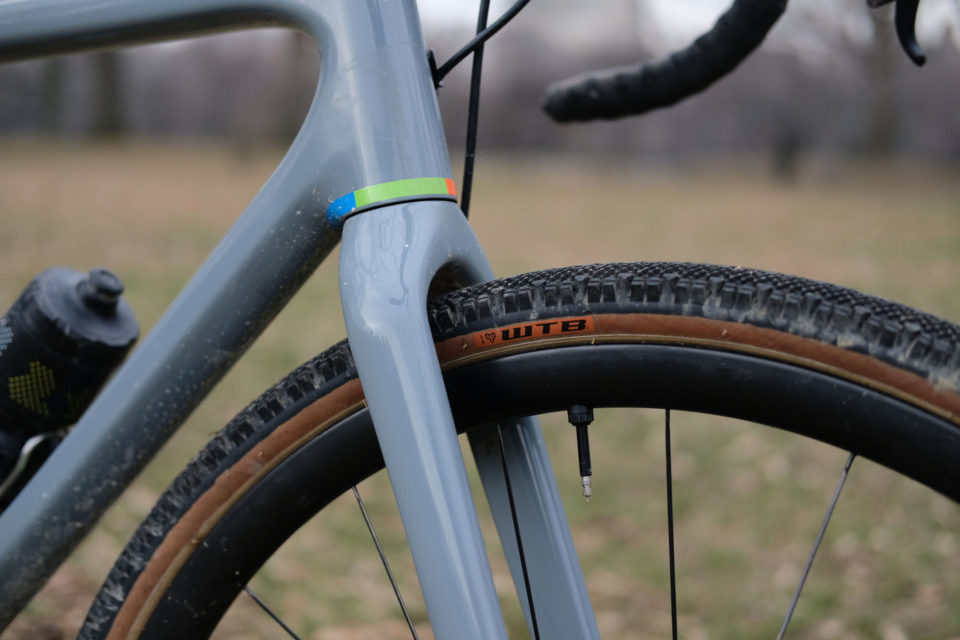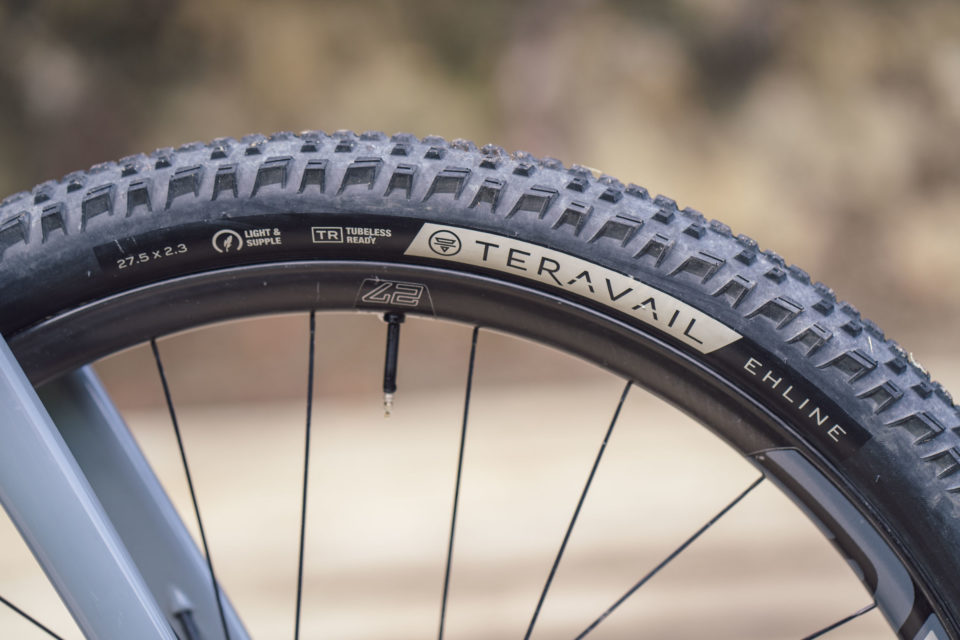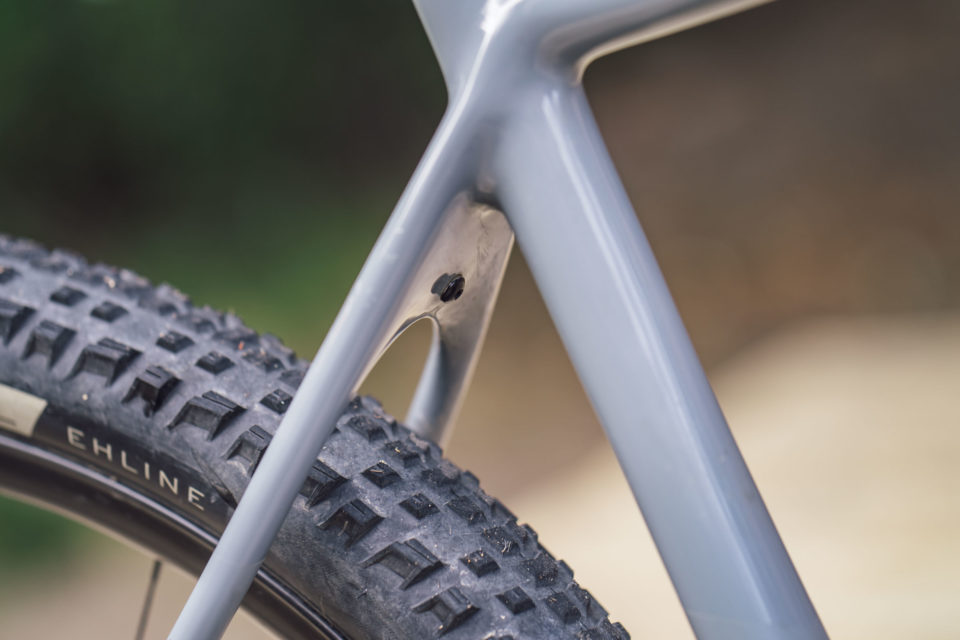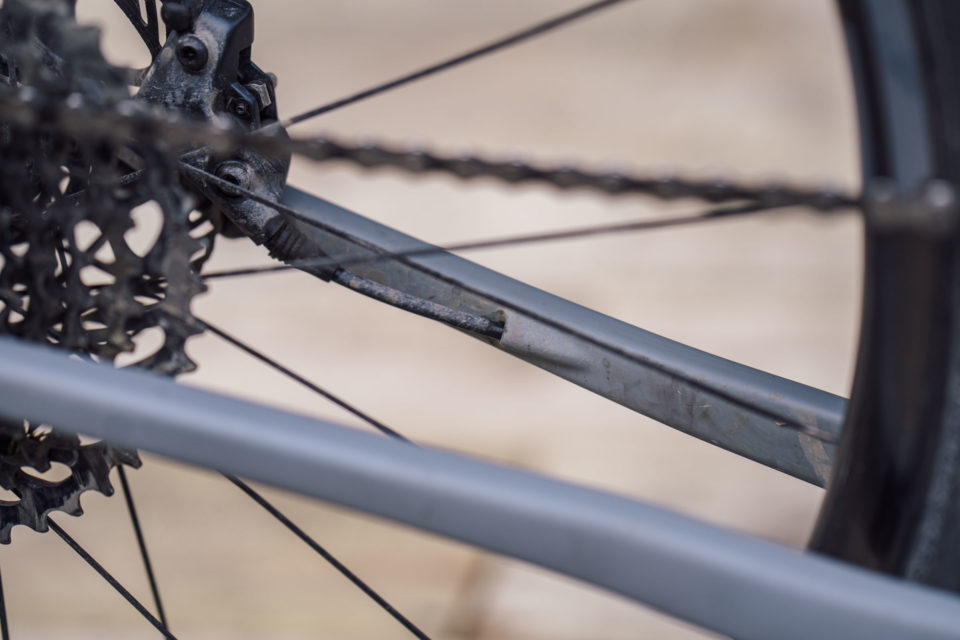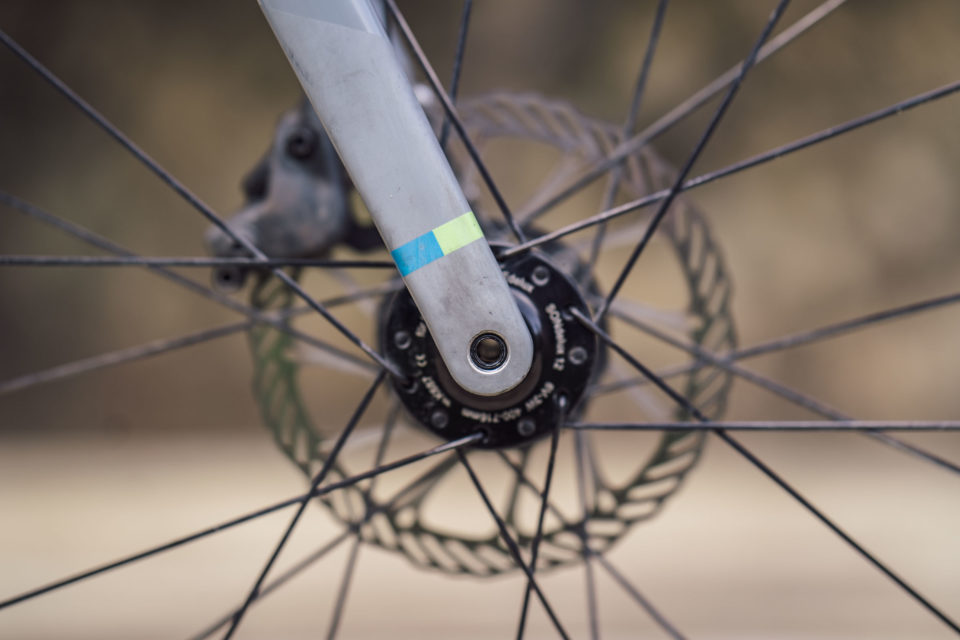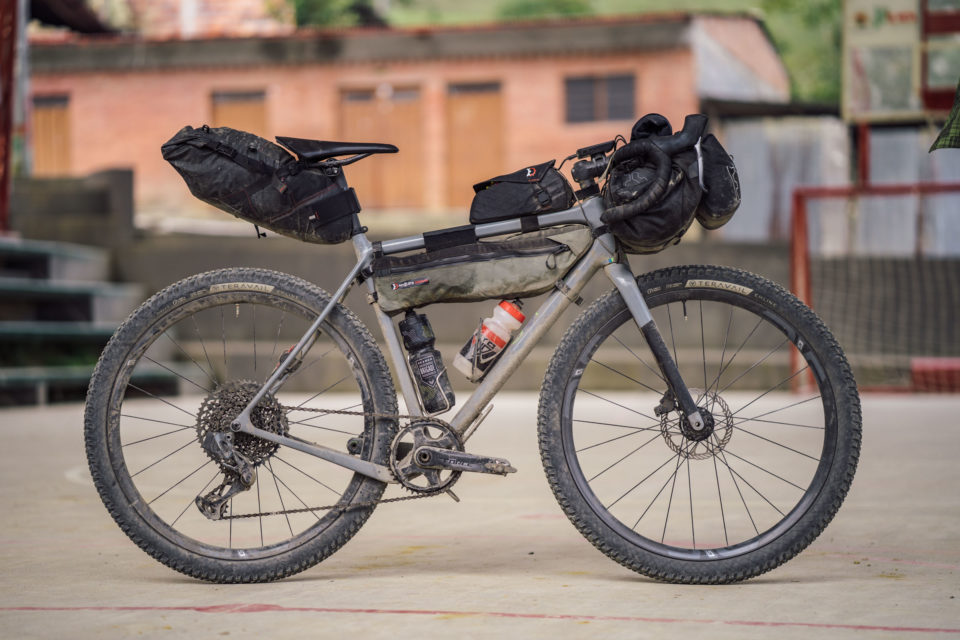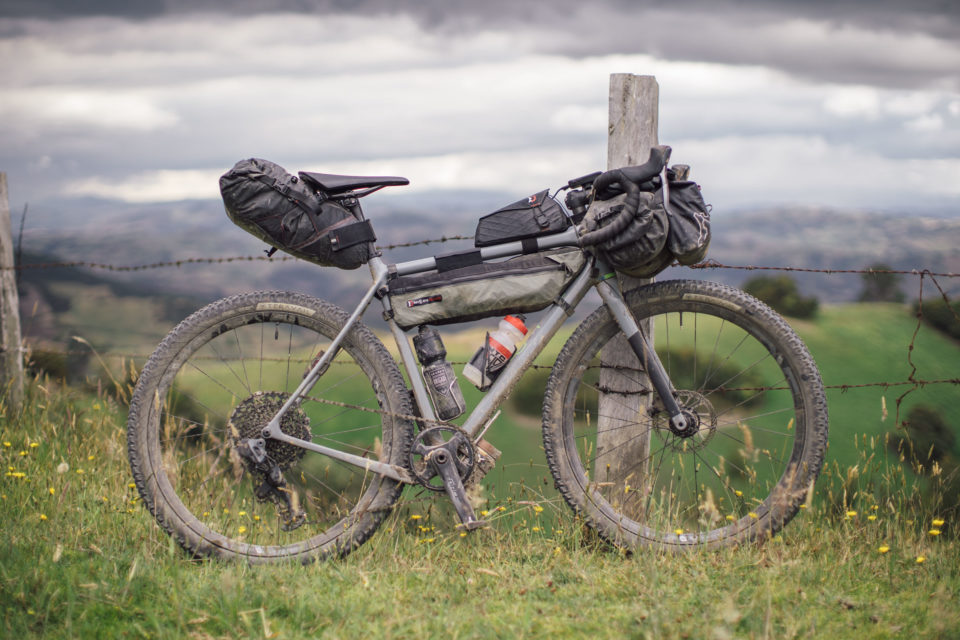Open WI.DE. Review: The Last Bicycle?
With clearance for 27.5 x 2.4″ tires, a quick and nimble geometry, and double dropped chainstays, the Open WI.DE. (Winding Detours) is a coveted and capable machine. Joe Cruz put this bike through a full test with big 27.5″ mountain bike knobbies in Colombia and 700C gravel tires back in Vermont. Read his detailed review here.
PUBLISHED Jun 11, 2020
When OPEN announced its Winding Detours (WI.DE.) gravel bike last year, it created quite a buzz. They presented it as the ultimate ultralight all conditions bike with monster cross tire clearance meeting the nimble manners of a road racer. Covetable and cool, capable and looking the part, it’s fair to say that the WI.DE. has by now achieved legendary status, partly for leading the way, partly for the flawless execution of the design goals, and partly because people more or less inevitably react with a “holy shit” when they see it up close. Behind the carbon fiber, the no-holds-barred build, and the exclusive price tag, does the bike live up to the hype?
- Highlights (size M)
- Frame/Fork: Carbon
- Angles: 71° Headtube, 73.5° Seattube
- Reach/Stack: 370mm / 670mm
- BB Drop: 75mm
- Bottom Bracket: BB386EVO
- Hub specs: 142x12mm (R), 100×12 (F)
- Seatpost Diameter: 27.2mm
- Max Tire Size: 27.5 x 2.4”
The OPEN cycle story is fairly familiar, but if you don’t keep track of these things, the company was started by cycling industry veterans Andy Kessler and Gerard Vrooman in 2012. Their track record includes innovative work at Cervélo, which in the late aughts produced some of the most high-profile carbon road racing bicycles in the world. OPEN’s first model, the U.P., redefined and set the technical standard of what a carbon, race-oriented big tire clearance bicycle could be. No, of course they weren’t the first or the only company making this kind of bicycle, but they took the potential of putting high-volume tires on a road bike and sprinted for the line.
The key was the dropped chainstay, which doesn’t trace a straight line from the bottom bracket shell to the rear dropout when viewed side-on. Instead, it descends first, then arcs outward and rearward, effectively clearing space for the chainring and a wide tire while maintaining a narrow-Q bottom bracket and a short effective chainstay distance. This combination of frame features so often in the past involved letting go of one of those crucial desiderata, but OPEN put into the carbon fiber mainstream a no-compromise solution. These days numerous gravel bikes feature the same approach. The WI.DE. doubles down on the chainstay design by dropping the non-drive side chainstay as well. The result is a bike that can fit 650b x 2.4” full-on mountain bike tires with a narrow road-bike Q-factor, 420mm chainstays, and up to a 46t chainring, depending on build details.
It purports to be OPEN’s response to the bigger, better, faster, more imperative.

HOW DOES IT RIDE?
When I first received the bike, I mentioned to a pro racer friend that I was test riding the WI.DE. and he confessed that it’s the bike he wants most of all. We joked about how unenthusiastic his sponsor would be about that. But, really, what’s special about it? Drop bars with voluminous knobby tires were always in the mix in the history of mountain bikes, and monster cross designs bridge right up to current gravel offerings. I would say that what makes the WI.DE. remarkable is its comprehensive commitment to achieving road bike manners and feel. The WI.DE. is an expression of OPEN’s specific point of view on how a rough conditions bike should handle. It’s more or less the opposite of the approach taken by slack bikes that have slowed down the handling in favor of stability in high speed descents in chunky conditions.
It’s not that the WI.DE. is unstable at speed; these things aren’t an on-and-off switch. On a continuum of trail manners, though, it feels like a race bike in that it wants to turn, it wants to dig in with its short chainstays, and it wants to rotate smoothly in and out of the paceline when you’re shoulder to shoulder with other riders. With its 71-degree headtube angle and 50mm offset yielding a middle-ish 69mm trail, yet with unabashedly MTB tires, it’s as close as I’ve come to the feeling of taking a rapier-handling road bike deep into the woods. I love that sensation and that’s precisely what I want out of my big tire, drop bar bikes. If, on the other hand, you’ve been tempted by, say, the Evil Chamois Hagar or even the current generation Salsa Cutthroat, there isn’t a remotely apt similarity between the approaches here. They are opposite beasts, and that difference is the complete reason for the WI.DE.’s existence.
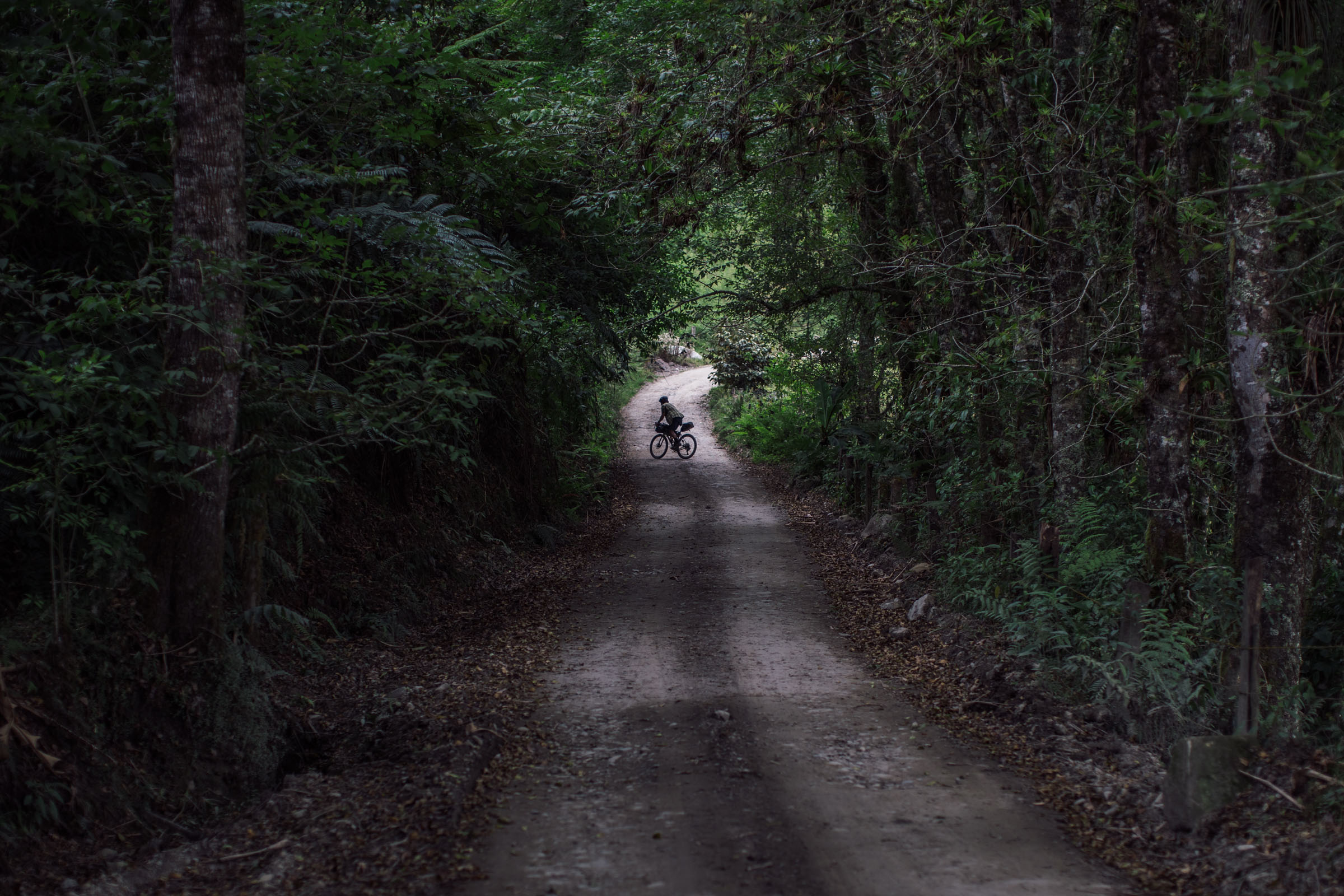
My test WI.DE. was equipped with 650b ENVE carbon wheels and Terravail Ehline 2.3s. The rest of the build was top-drawer light and pricey trim: ENVE seatpost, stem, and bars, and a SRAM AXS mullet drivetrain. The AXS setup is identical to what is on my personal bike, so I could easily concentrate on the feel of the bike while abstracting away from the shifting. Once I got the tire pressure on the Ehlines correct, the WI.DE. was absurdly cushy, sense-defyingly spry, and basically unstoppable on conditions that could be plausibly characterized as gravel terrain. I had no toe overlap with my size 42 shoes. It was easy for me to achieve a position in the happy medium between too upright and too racy, helped along by the 150mm headtube length.
The frame feels the way contemporary carbon always does in that it dulls the buzz when the tire pressures are high, and it shows little bottom bracket or head tube deflection when applying torque. The seatstays are reasonably small diameter so perhaps some flex is achieved there but, really, for this kind of bicycle the low tire pressures are 90% of the comfort. The light wheels likely help explain why I didn’t find the bigger tires particularly off-putting while accelerating. Unsurprisingly, it handled technical sections of trail best when I was in the drops. That’s true of almost any bike, of course, but I’ve found that bikes with slacker front ends are more tolerant of hitting a patch of chunky chunk chunk (™Jess Daddio) while on the hoods and riding it out. On the WI.DE., the drops were the way to go. And it achieves a ready equanimity on techy little climbs where you’re hunting for a line. It easily darts from path to path on a doubletrack, and encourages a quick recovery if you find yourself perpendicular to where you meant to be heading.
In all, I found the handling to reflect the mandate of the WI.DE. In spite of the ample tread, it always felt light on the steering, maneuverable, easy to loft either wheel, and ready to be steered from the shoulders or hips. If you’re coming to the gravel scene from road riding and you want to dive into the deepest part of the pool in terms of tire size but you still want to export road bike emotions to gravel roads, OPEN’s WI.DE. absolutely fits the bill.

BIKEPACKING ON THE OPEN WI.DE.
I rode the WI.DE. on a January trip in Colombia where I was part of a small team scouting a set of routes created by Logan Watts with support and coordination from Conservation International. The unknown terrain and technical complexity of the project would normally have had me reaching for one of my familiar and proven personal rides, since dealing with an unknown quantity as central as the bicycle itself is a risk. But the handful of solo and group outings near home gave me confidence in the WI.DE.’s feel and range. With my gear in a half frame bag, seat bag, and front roll, I’m pretty sure I had the lightest setup by a fair margin. So much so that I tried to avoid situations where anyone in the group would have a chance to lift it up, knowing I would take a bunch of grief for its feathery weight.
OPEN generously gave me the green light to give it a real test, and I treated it just as I treat my own bikes: I bashed along the track, I descended on defiant stair step “roads” at full gas, and I strapped it on top of a jeep a couple of times during our transfers. (One concession to the niceness of the WI.DE. was taping the areas of the frame that contact bag straps. I knew they would scuff up the carbon fiber a fair bit.) The WI.DE. yawned and would have seemingly happily taken more. The position was comfortable for sunrise to sunset pedaling and—perhaps unexpectedly—I never felt overly fatigued from the concentration required to stay on top of the WI.DE.’s snappy disposition.
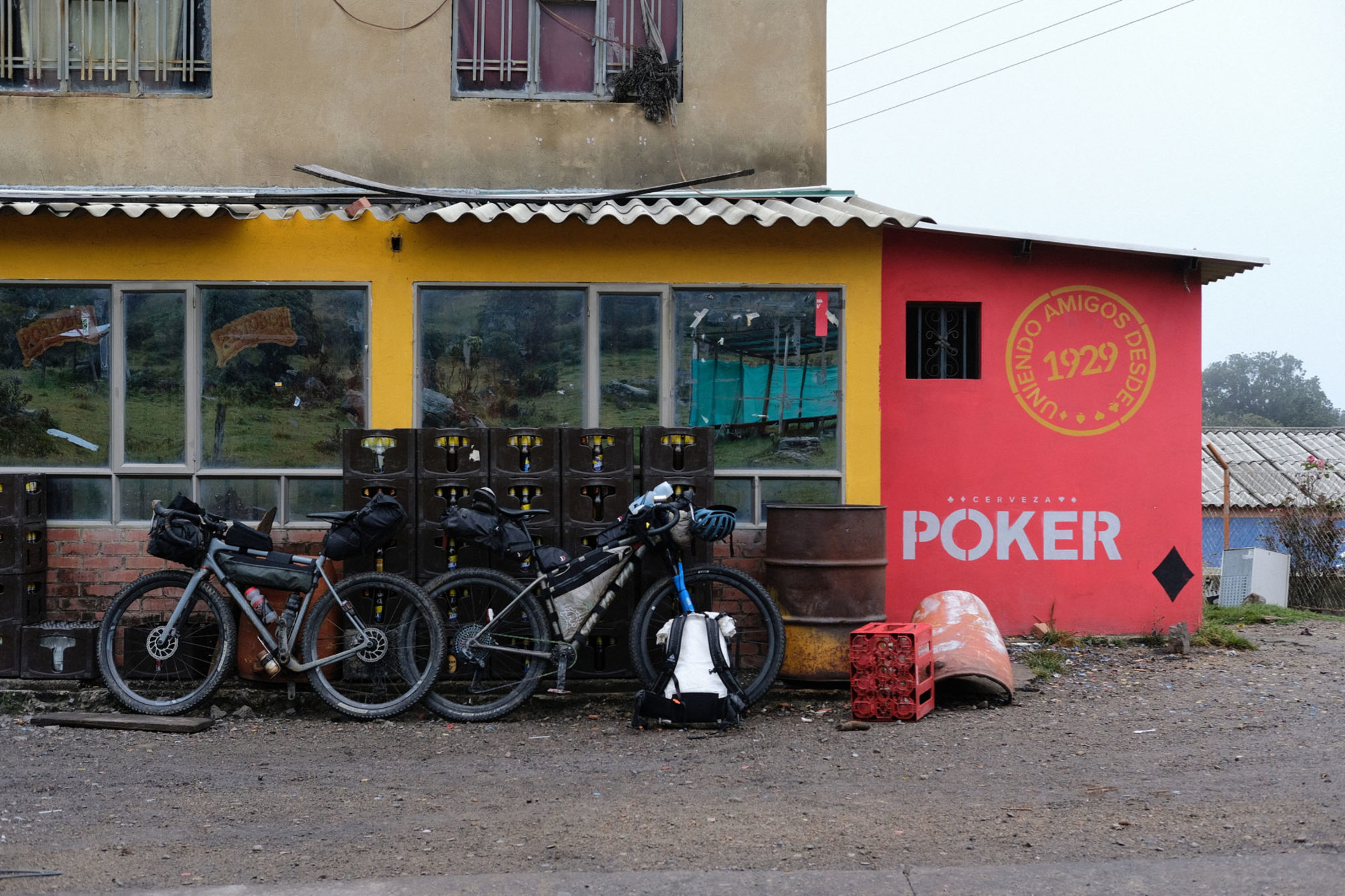
I tend to bias the bulk of my bikepacking kit to the front roll, as that’s where all my spare clothes and sleeping bag will normally be. My camera gear will be in the front pocket, which adds even more weight to the front end. I have no objections to the way the WI.DE. handles with a load in front. It slows the steering compared to the unladen bike, but with the WI.DE that results in handling that is well within the normal range because the low speed steering requires so much input to begin with. The other thing about a loaded bike is that it can be harder to cope with demanding terrain because the bags and weight resist quick adjustments. Again, the WI.DE. offers a nice answer to this challenge, since it was easy to redirect and was responsive when it got kicked off a vector.
Bottom line: Don’t confuse the WI.DE. for a day bike—it’s an adept bikepacking platform. You can confidently take it on demanding remote races and trips.

SWITCHING TO 700c WHEELS
Back home I borrowed a set of 700c wheels with 38mm WTB Venture tires. These fall within the range of 700 x 35-40mm road tire sizes that OPEN recommends, but wasn’t a perfect test of the WI.DE.’s road worthiness. I would have wanted to mount, say, René Herse Barlow Passes, which are fast and have a tremendous road touch. But my 700c test gave me a fair perspective on what it would be like to have an extra wheelset in the garage to transform the WI.DE. into a road bike. That versatility is claimed as a selling point for bicycles like this.
I wasn’t disappointed. With 700c wheels, the WI.DE. positively flew along the tarmac. This is a setup that I wouldn’t hesitate to take out on the fastest group rides or in any amateur race. Perhaps the only reason to keep your traditional recent vintage race bike is that the gain in efficiency with a 38mm tire over, say, a high quality 28 or 30mm tire would then need to be understood against the greater weight of the 38mm tire. If that kind of watt counting is your game, it’s then a genuine empirical question and you’re encouraged to pursue it. If you’re less pathological than that, the WI.DE. with 700c wheels is probably as much road bike as you can need.
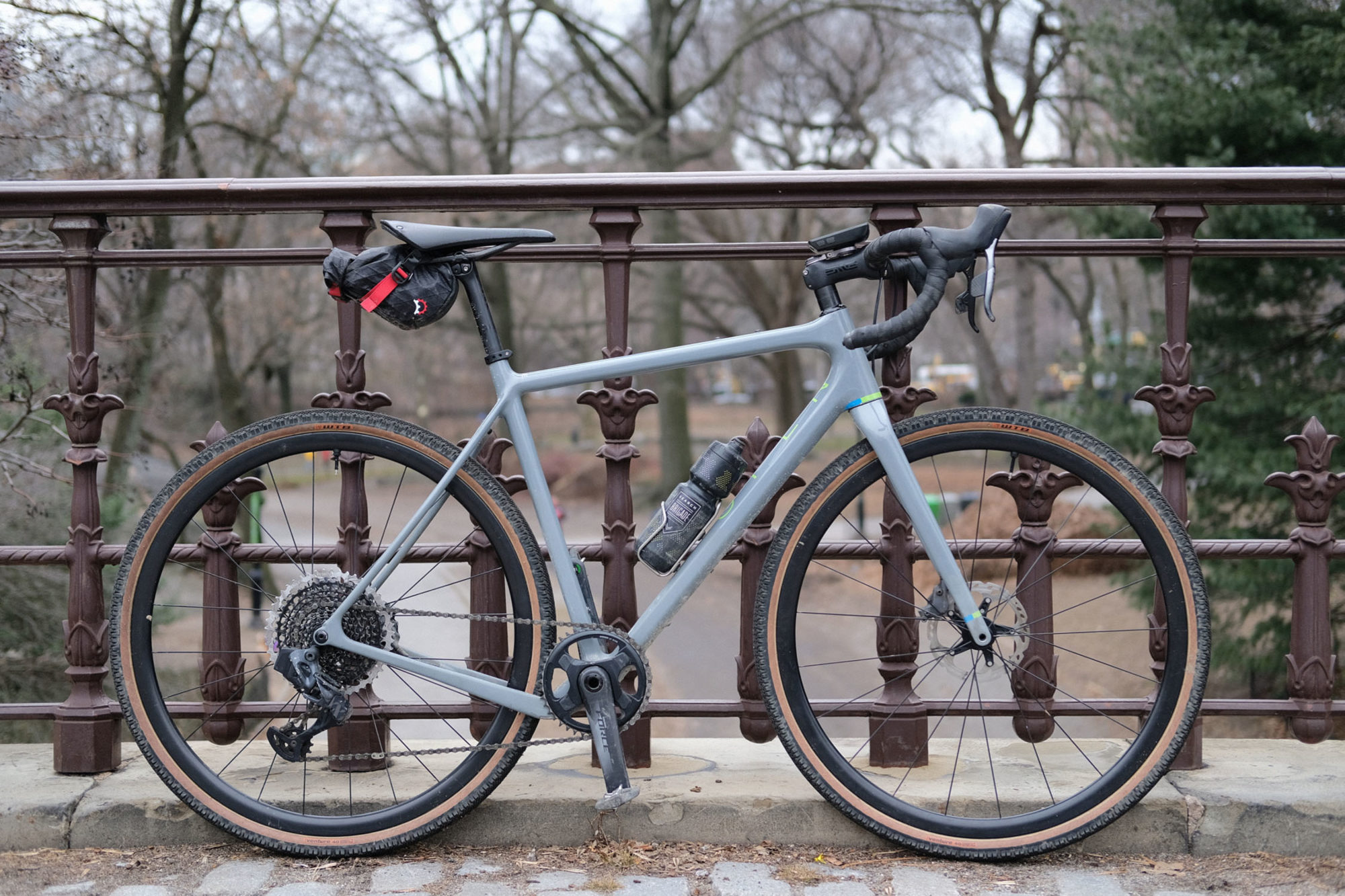
I will say, though, that the low speed handling with the 700c wheels shaded into territory that I didn’t love as much as when it had the 650b wheels on it. I got used to it quickly, and it’s not far off of my road race bikes, but it takes some vigilance with a noticeably increased tendency to wheel flop. It raised my eyebrows to discover that the mechanical trail is the same between 650b x 2.3” and 700c x 38mm. I suppose that what I was noticing, then, was the difference in contact patch and pneumatic trail between the two tires. Habits that I didn’t mind and even appreciated with the 650b tire struck me as on the edge of acceptability for the 700c tire.
FRAME AND BUILD NOTES
The understated but quality paint and the pristine fit and finish of the carbon was just as one ought to expect for a premium frameset. The hydraulic brake lines are routed internally for a clean look, as would be wires or cables for the rear derailleur. There are modular caps for the entry points into the frame to accommodate different combinations of brake line and cabling needs, and foam inserts to eliminate rattle. I should say that I find internal brake line routing through the fork leg pretty annoying because it means that you can’t easily detach the fork entirely from the frame to pack it at an odd angle in a small box. Bikepacking trips sometimes involve improvising how a bicycle gets transported home, so to have a constraint placed on packing solutions isn’t ideal.
In what is likely to be seen as a more serious shortcoming, the fork has no mounts for bottle or multi-use cages. To me, that’s in keeping with the overall racer-ish personality and image of the bike, and one can imagine that OPEN is particular about things that will detract from the handling of the front end, as bottles might. On the other hand, for a bike that is advertised as capable across all kinds of rides and will often be ridden with a bar bag of some sort, it is probably a misguided decision. Incidentally, in some of the images you can see a sleeve wrapped around the right front fork leg. That’s a length of inner tube behind which I run the dynamo cable to a Sinewave USB box in the top tube bag.
When OPEN released the WI.DE., they indicated that a proprietary fender set was in development that would interface cleanly with the frame’s design. That has been delayed, so right now the only option for fenders is a clip-on set like the SKS Speedrockers.
There are bolts for a top tube bag, and the dropped chainstays create a broad rectangular mounting platform under the bottom bracket where OPEN has placed a mount for affixing a tool case in addition to a standard bottle cage under the down tube. The bottle cage on the seat tube sits suitably low, leaving room for a half frame bag above it. Here’s a baffling flaw: the bolts on the test bike were of such soft metal that half were already stripped from previous testers, and the rest I stripped by giving them a mean glance. Weird. Replace them all.
The WI.DE. is 1x only, since double rings wouldn’t allow the wide tire clearance with the narrow bottom bracket. As far as build, the ENVE parts were very nice. If you bought them and they weren’t, you’d be justifiably pissed. We’ve reported extensively on SRAM’s AXS wireless components, and I can confirm here again that I found it to be flawless on the OPEN. We gave the equipment a beating in Colombia, and the AXS never flinched or frowned. I carried a spare, but didn’t charge the battery for the whole trip. Lael likes to point out that electronic shifting is great for hand fatigue on endurance rides.
- Frame/Fork OPEN WI.DE. (size medium)
- Rims ENVE Carbon
- Hubs SP-PL8X dynamo and I9 Torch, 100 and 142mm thru axle
- Tires Terravail Ehline 650b x 2.3”
- Stem ENVE
- Handlebar ENVE
- Seatpost ENVE 27.2mm
- Shifters SRAM AXS Force 1x Hydraulic
- Brakes SRAM Force 160mm rotors only
- Crankset SRAM Force
- Derailleur SRAM Eagle AXS
- Saddle Brooks Cambium Carbon C13
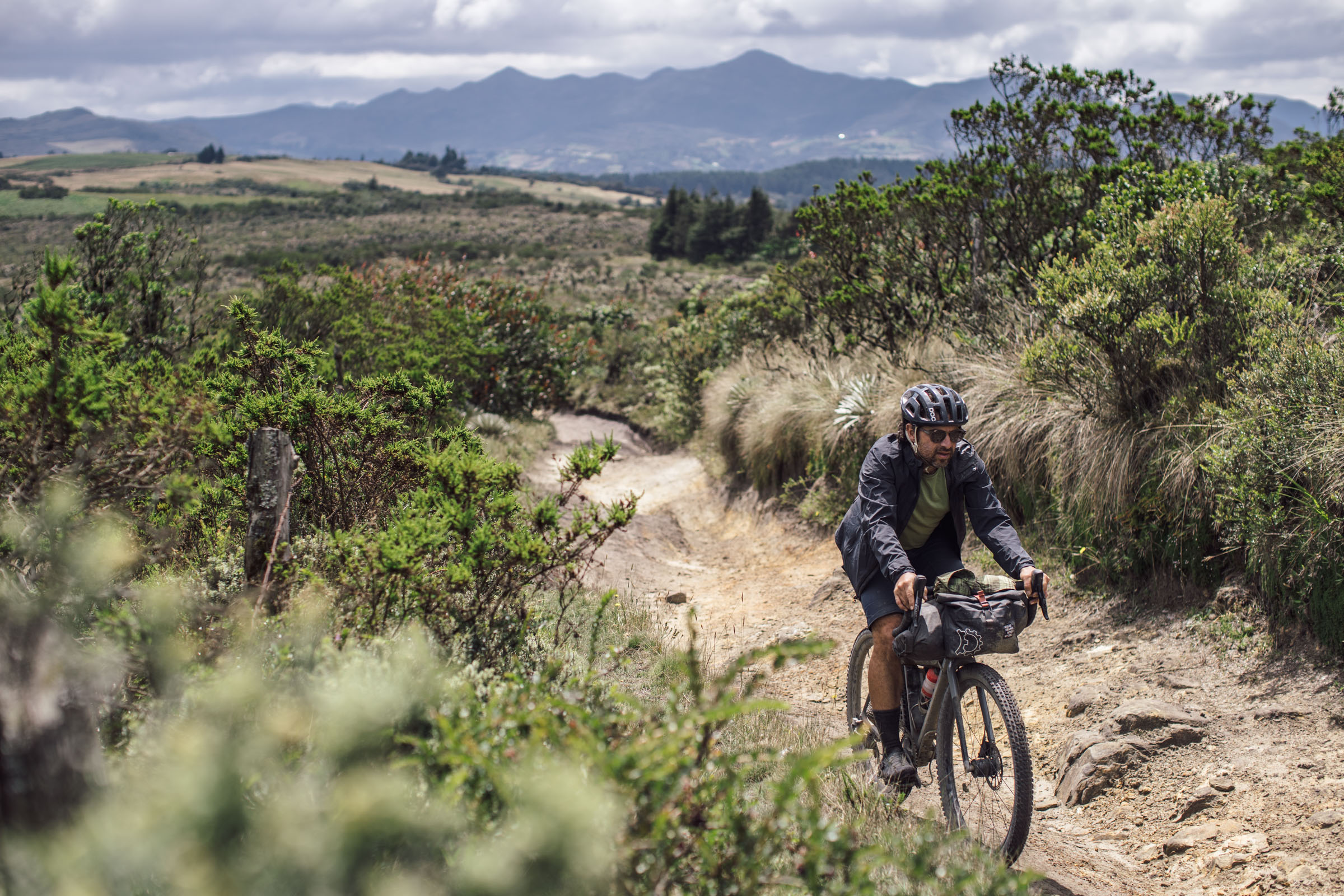
PERFECT OR UNNECESSARY?
As always, I’m aiming in this review to offer an honest subjective impression backed up with enough context and data to help you make sense of whether the WI.DE. will appeal to you. But I feel as if there is a broader issue about the general bona fides of this kind of platform. So here’s something of a philosophical coda about whether and where this kind of bike makes sense to me. I hope it’s obvious that I was impressed by the WI.DE. It’s a fancy machine and it earns massive kudos. Yet I remain unpersuaded.
Not counting the 700c wheel test, I took the WI.DE. on three kinds of rides. I took it on barn burner mixed terrain half-day outings where everyone was on drop bar adventure bikes. I took it on singletrack-heavy rides where usually I was solo but where occasionally I rode with people who were on their hardtails. And then I took it on a bikepacking trip which on paper looked like a gravel-friendly route but on the ground was pretty punishing and unrelenting.
On the mixed terrain rides—sections of gravel here, some overgrown doubletrack there, a singletrack shortcut, and all linked up with tarmac 20 or 30 kilometers at a time—the WI.DE. was excellent. The disciplined handling, which has been a theme of this review, was stellar. I didn’t, however, on those occasions feel like I needed to have the 2.3” tires on it. The terrain didn’t call for it, and my friends on 700c x 40mm or 650b x 50mm—think of a Santa Cruz Stigmata or a Surly Midnight Special—were in their element. They didn’t seem to need the MTB-caliber tread. I came to the view that, though the WI.DE. is comfortable and confident with the monster tires, I was lugging around extra rubber that really didn’t make a difference. Moreover, on the WI.DE. I wasn’t going faster or notably having a better time as compared to similar rides on my personal adventure bike, which runs 650b x 47mm tires with modestly treaded WTB Byways.
On the more MTB-type rides, the WI.DE. was a rodeo performer and ready for a range of singletrack. I could definitely go further and faster than on my gravel bike. But if I wasn’t testing a bike, those are trails where I would have been riding my rigid 29er and I would have had more control with my wide bars and, again, no less speed or fun. Indeed, given my riding style, I feel like I could do at least 10% and maybe 20% more on my rigid flat bar bike than I could on the WI.DE. because my technical skills all originate in and orbit around the body positions, leverage points, and cockpit dynamics of a flat bar bike. A good example of this is manualing through a rock garden. Yep, I could do it on the WI.DE. but it wasn’t pretty and it certainly wasn’t as effective as on my MTB.
How about the bikepacking trip? Honestly, at the end of our several weeks in Colombia, if I could have gone back in time to repack gear, it would be a 29er rigid or hardtail. We weren’t racing—well, sure, I was riding at the limit to try to keep up with Lael, but still—and ultimately there was very little smooth gravel or asphalt. The majority of the ride was on demanding jeep roads, i.e., ones that with patience and skill you could pilot a high clearance four-wheel drive on, but definitely not a passenger car. Some of the time there were babyheads and craggy, rutted staircases. To me a flat bar MTB is overall a better tool for that job than any drop bar bike. Nor am I persnickety about having a range of hand positions, having ridden on a year long bikepacking trip with only the flat bar.
Therefore and ultimately, I am skeptical of the need for a drop bar bike with burly, trail-worthy tires. If I know in advance what terrain I’ll be riding, I’d either ride my adventure bike with narrower tires than the WI.DE. or I’d ride my ten-year-old 29er. If I didn’t know what was coming but thought it might get rowdy, I’d just default to the 29er because basically that’s never a bad choice as long as you’re not competing against a bunch of people on drop bar bikes with drafting tactics in play.
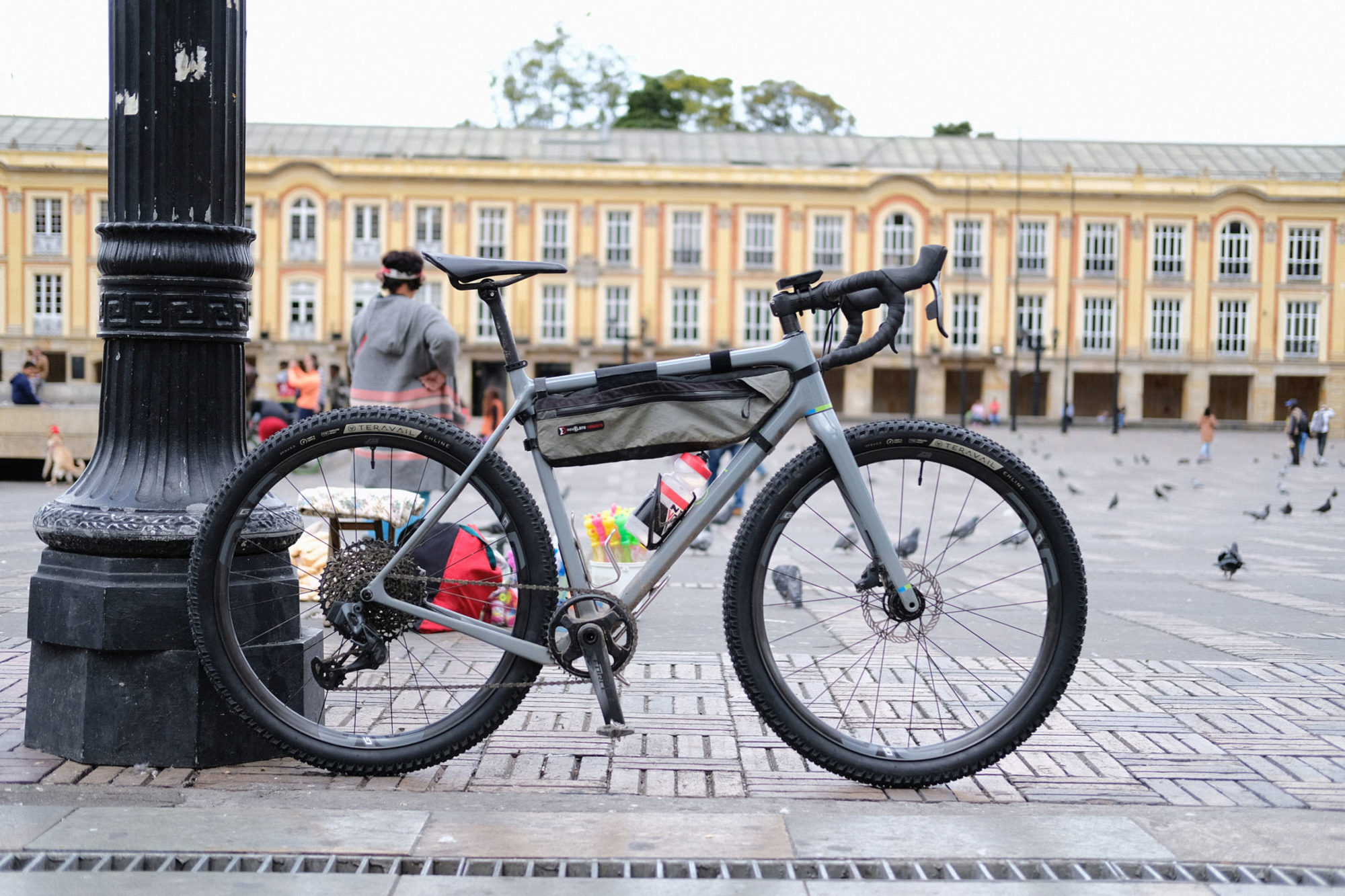
When Lael saw the WI.DE. during my testing, she grokked it immediately. She declared it a perfect looking setup for a race like the Dirty Kanza XL, namely a ride where the goal is going hella fast on sustained choppy roads with intermittent sections where the drop bar format gives an advantage. But that’s not my gig. What about the WI.DE.’s gymnastic agility that I’ve been celebrating? Isn’t that something many or perhaps even most 29ers lack? Look, if I’m on a drop bar bike riding plenty of dirt, occasional singletrack, and a dose of asphalt, I want to be on a bike that handles like the WI.DE., but the big tires for me pass the point of diminishing returns. I happily ride the rides I’m talking about on 650b x 50mm tires. Once you’ve entered the world of 2.2”+ tires and are riding terrain that truly calls for them, I’m happier on a proper MTB which, granted, often implies a different suite of handling characteristics. Mountain bikes are great at what they do.
One final way to put it is that the WI.DE. substantially overlaps a standard gravel bike, a standard hardtail, and, with a wheel change, a standard road bike. In and of itself that’s a huge achievement, and if you had none of those, you could get a WI.DE. and it would be the last bike you would need. Well, at least until ten years pass and we all “need” some new thing. But if you have a gravel bike that you like, it’s probably 10% better in its element than the WI.DE. because the WI.DE. has pointlessly fat tires. If you have a hardtail you like, it’s probably 20% better in its element than the WI.DE. because it’s designed to be great on trails and rocky doubletrack, and while bikepacking.
Maybe saying all this makes me a curmudgeon, and I suppose I am (all the bearded trucker cap fellows who write around here may look old, but I’m actually older and curmudgeonly-er). The WI.DE. is comprehensively up to the challenges that I tested it on. It absolutely was. It’s a titanic bicycle. More than any bike I’ve been on, it’s a fat tire road bike, way more assertive on singletrack and chunk than any cyclocross or 650b x 50mm tire gravel bike and way more agile than fatter-tire rigs with slack geometry and go-straight optimization. The WI.DE. is truly an impressive crossover mutation. Did I love the WI.DE.? Decisively yes. Do I need a WI.DE.? Nah.
- Weight (Frame size M) ±3% 1040g
- Weight (Fork) ±3% 390g
- Sizes Available XS/S/M/L/XL
- Color Grey matte/gloss mix, Orange, Turquoise, RTP
- Place of Manufacture China
- Price $3,200
- Manufacturer’s Details OpenCycle.com
Pros
- Super quick handling very familiar from road bikes.
- Buildable into a lightweight rocketship.
- Refined and optimized construction from designers who have been creating top carbon bikes for over a decade.
- Clearance for full on mountain bike tires for the roughest dirt and gravel roads; can go a long way beyond most gravel bikes on singletrack.
- Very capable for a fast road ride or a road race with 700c wheels if you like quick handling.
- A variety of bosses for cages, a gas tank bag, and a tool case under the bottom bracket.
Cons
- If the WI.DE.’s sweet spot is not your primary riding niche, you probably don’t need this bike.
- Notable wheel flop with 700c x 38mm tires.
Wrap Up
The WI.DE. is a superlative bicycle. It rips, it’s bogglingly light, it handles like a dream. To be sure, those handling accolades presume a very specific taste in bicycle feel, much more like a road bike than the increasingly popular long-and-stable approach to gravel bikes. The WI.DE. stands out in its refinement and in not being like that. I can hardly think of a thing I would change, and if I graded it for the day rides and longer trips I do, it’s a no-brainer “A+”. But should you scrimp and save and agonize over your bank account to put your hands on one? I’m not seeing it. Short of a very specific type of racing, or unless you absolutely positively have to mountain bike on a drop bar/road bike feeling bike, there is basically nothing that this bike does that couldn’t be achieved on a quality 29er. And, at least for me, that 29er would be better in lots of situations.
Many thanks to Open Cycles for loaning us this WI.DE. for a rigorous test. I tested a size medium. And a hearty shout out to Donalrey Nieva for loaning the dynamo front wheel for the trip and to NYC Velo for loaning the 700c wheelset to enable us to check the versatility of the bike.
RIDER PROFILE
Joe took his first bikepacking trip in the late 80s and has since traveled the world on everything from a folding bike to a full-suspension mountain bike to a fat bike.
- Height: 5’8” (173cm)
- Weight: 155 lbs. (69.4kg)
- Inseam: 31” (79cm)
- Location: New York City and Southern Vermont
- Current Beer: Lawson’s Little Sip IPA
Please keep the conversation civil, constructive, and inclusive, or your comment will be removed.








